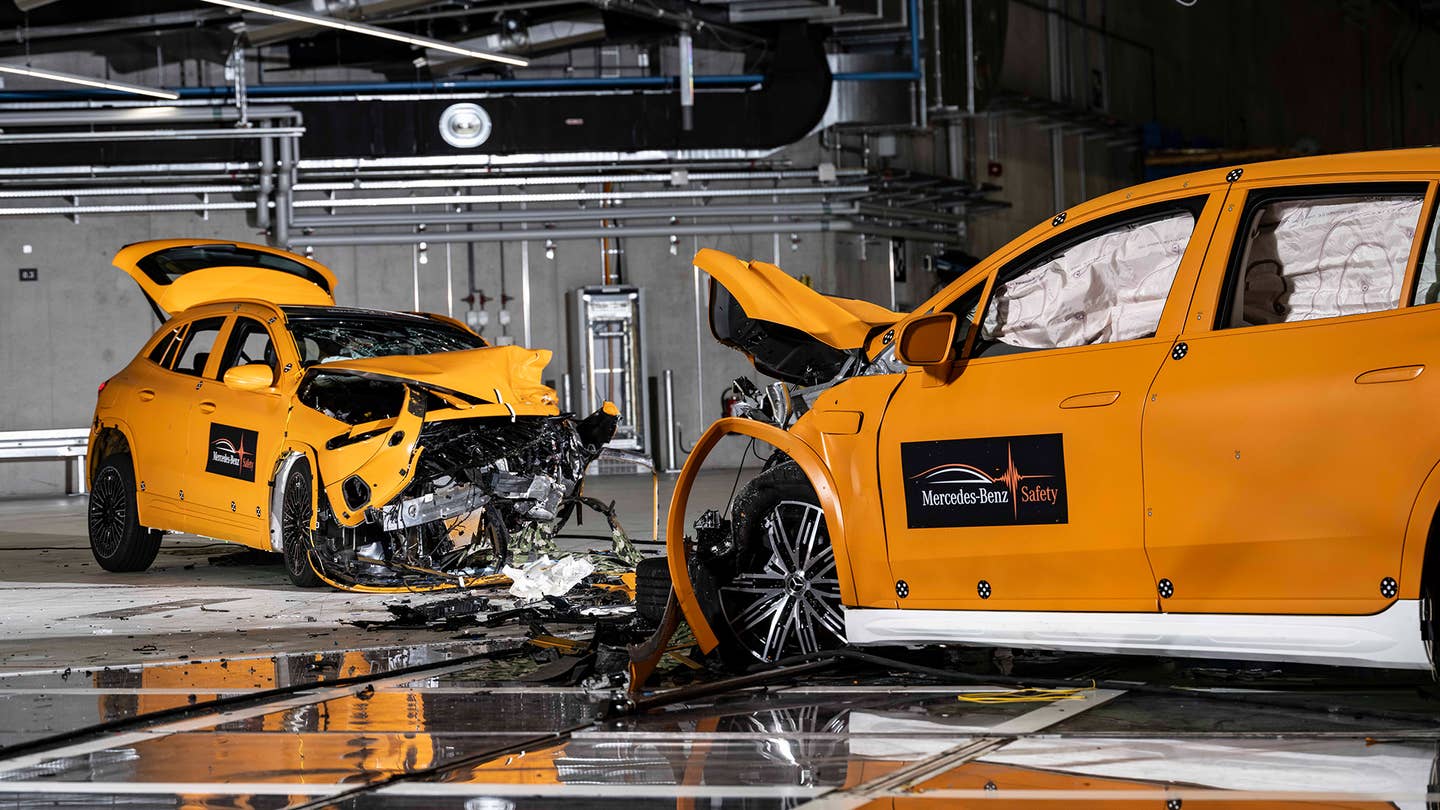It’s the first public crash test between two fully electric vehicles, Mercedes says.

Vehicles are getting heavier. Between never-ending car bloat and fully electric vehicles making large, heavy battery packs the norm, the amount of mass traveling down the road at highway speeds can be more than a little concerning, if you stop and think about it.
Mercedes-Benz wants the world to know that despite an EV being heavy, it can also be safe in a crash. To prove it, the German automaker put two of its electric SUVs in the ring with one another. The result? According to Mercedes, the “world’s first public crash test involving two fully electric vehicles.”
via Mercedes-Benz
Mercedes’ test is meant to replicate the NCAP speeds and positioning. But instead of facing a 3,080-pound cart, the automaker launched two of its own electric SUVs at one another: the roughly 4,400-pound EQA and the 6,000-pound EQS. Oh, and it also upped the ante by increasing the speed to 35 MPH (56 km/h).
The automaker says that it chose this test specifically because it’s common on rural roads during a vehicle overtake. The speed was selected to also better emulate real-world conditions, under the assumption that both colliding vehicles would be traveling faster but apply the brakes prior to the collision.
Following the collision, the high-voltage electrical systems in both vehicles were automatically switched off to prevent a fire. The passenger cell (the area that surrounds the cabin) remained intact and the doors were still able to open despite the wreckage, meaning that occupants would’ve been able to exit the vehicles. Mercedes’ Director of Vehicle Safety, Professor Paul Dick, reported that the batteries in both SUVs remained stable, and that the “chance is very low that the occupants, and therefore the dummies, have fatal injuries.”
Both electric SUVs lost their front-left wheels in the collision. via Mercedes-Benz
Despite the test being both fun to watch and informative to engineers, the automaker is hoping that one day these types of tests will no longer be necessary. Mercedes-Benz’s Chief Technology Officer, Markus Schäfer said that the company aims to have “zero accidents involving a Mercedes-Benz vehicle” by 2050. That’s a pretty ambitious goal, though. Back in 2008, Volvo aimed to have zero injuries or fatalities in its cars by 2020. The data hasn’t exactly trended in the right direction as of late, at least in the U.S. Mercedes plans to use the semi-autonomous driving tech found in Drive Pilot to help meet its objective.
Until that goal is achieved, car companies will just have to keep crashing cars, and filming the results. For science, of course.
Got a tip or question for the author? Contact them directly: rob@thedrive.com



